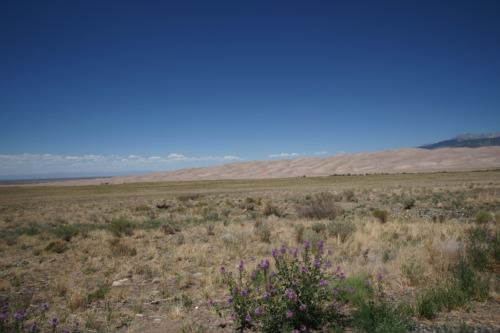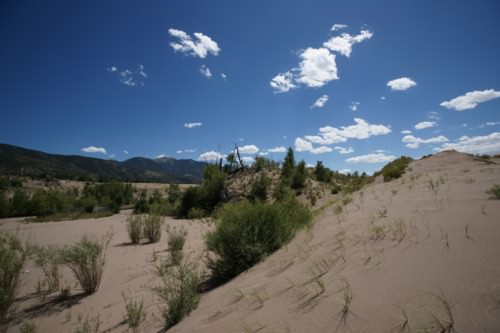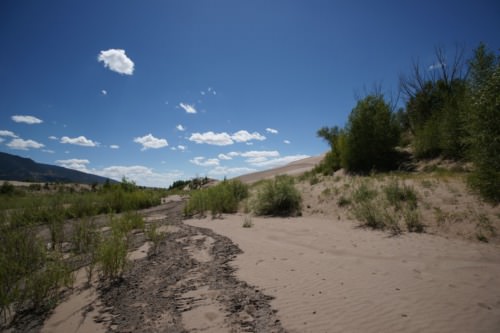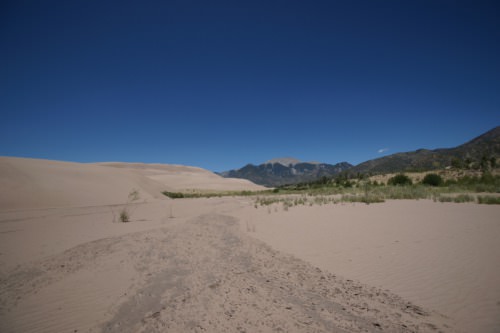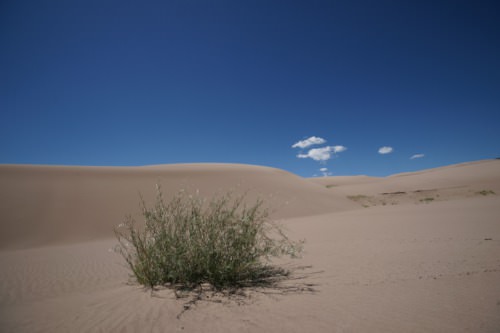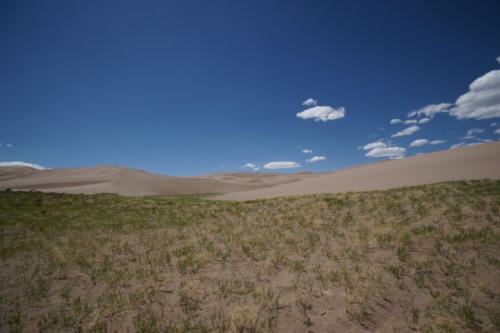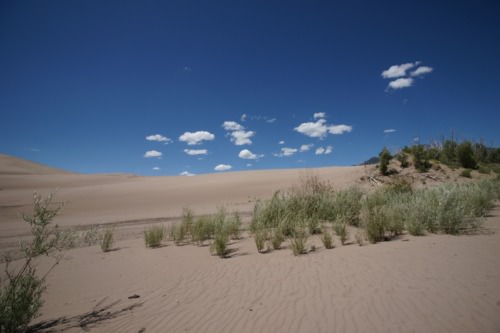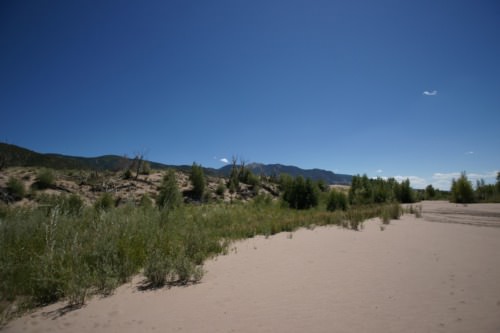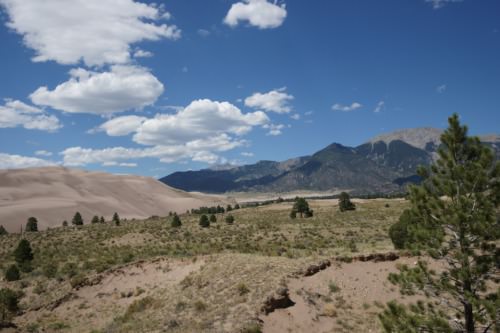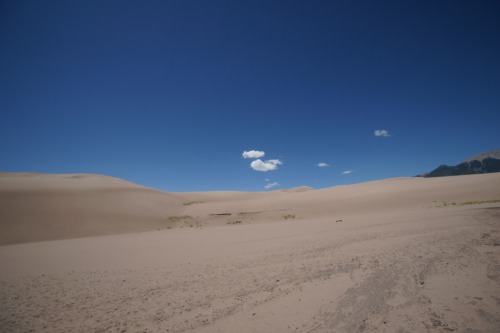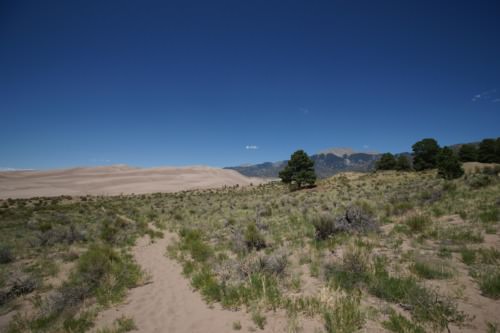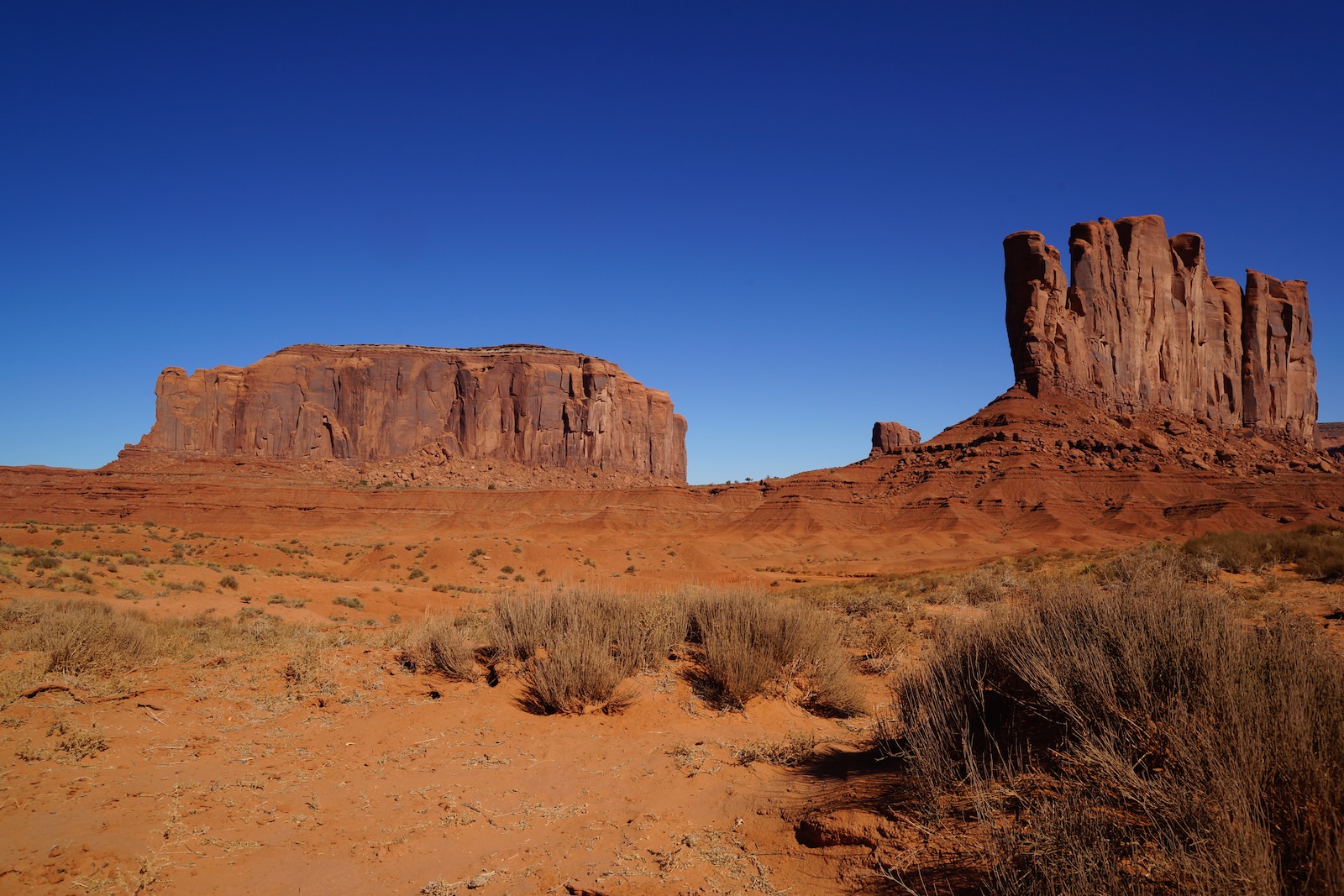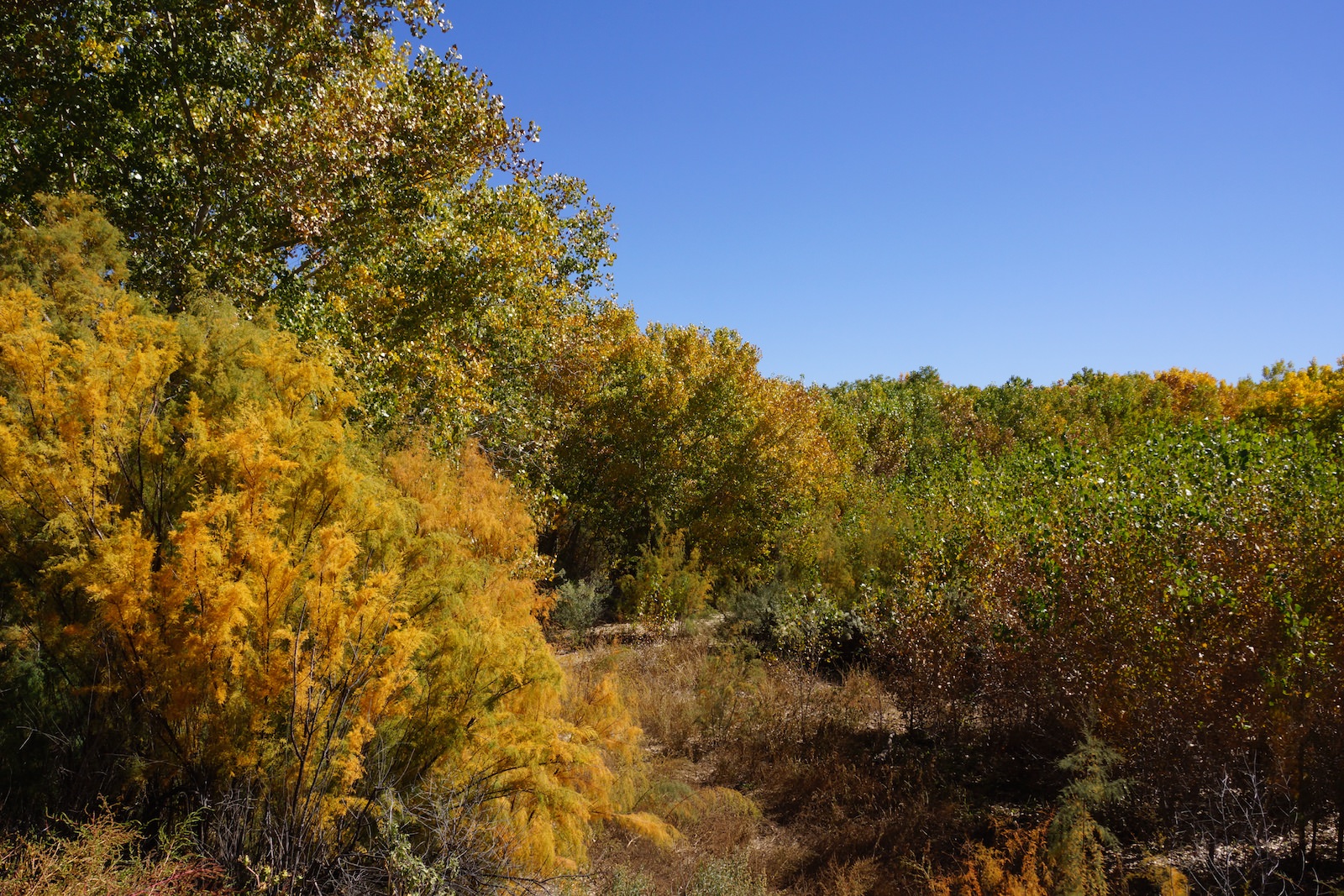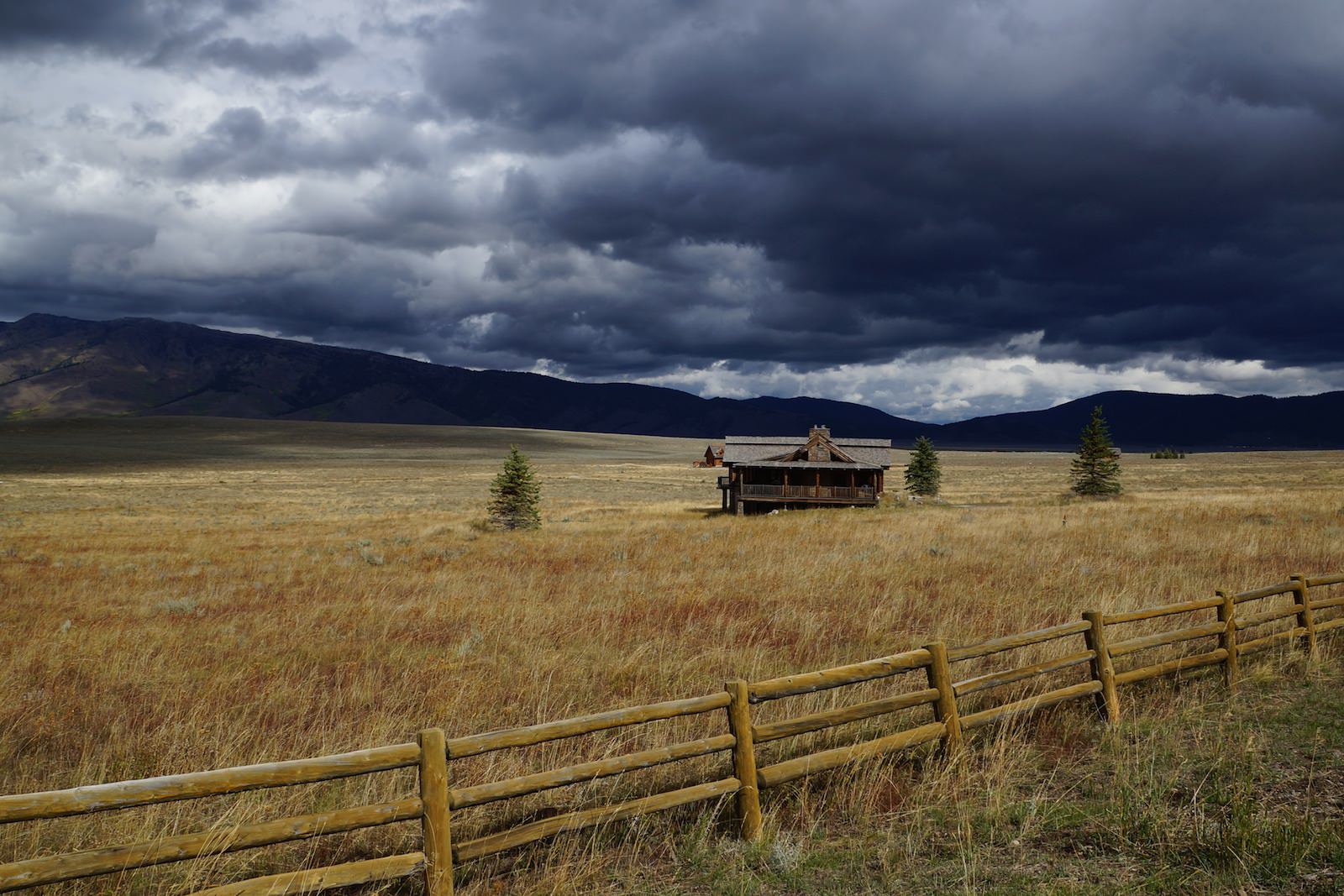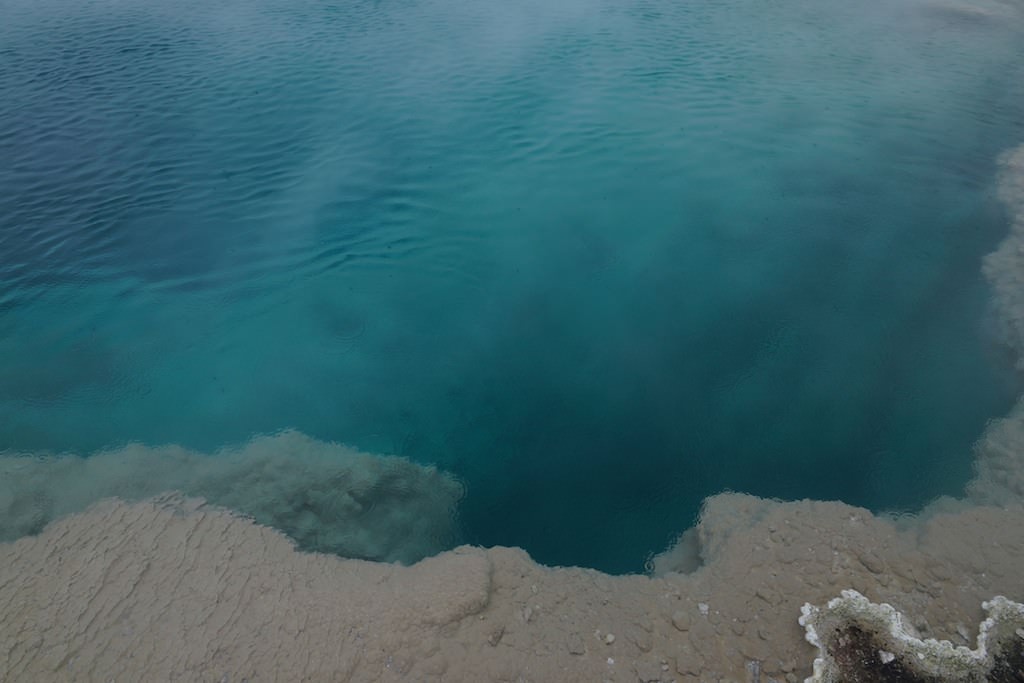Odometer: 25,808
We have a long drive ahead of us so we leave the hotel without any further delays.
We take SR 160 East – it leads us over Wolf Creek Pass which is at an elevation of 10,550 feet (3,200 Meter). It’s gorgeous up here – there is a small river with trouts in it. We are taking short breaks here and there and enjoy the beautiful mountain setting. We pass several inviting little towns that look very touristy and offer lots of motels and RV & Camp Sites. It is lush green and the temperatures are in the upper 70s or 80s (around 25 Celsius). In South Fork we pass the Rio Grande, which originates up here in these Colorado mountains. From here on we drive through a high plateau with lots of agriculture. We see grass-, potato- and wheat-fields and some cattle farms.
We are still more than 40 miles from the Great Sand Dunes away, but can already see them and behind them all the 12,000 (3,600 Meter) and 14,000 feet (4,200 Meter) high peaks.
Shortly before noon we arrive at the Great Sand Dunes National Park. We drive all the way, pass the official parking lots and continue on a gravel road to a remote parking area. From there we walk to the sand dunes. It’s a strenuous 2 hour walk through loose sand! Luckily, the temperature is quite pleasant.
On our way back to the car we see three male deer who let us come quite close before they finally run away – driving out of the park we see another four but from further away.
The tallest sand dunes in North America. The dunes cover approximately 39 square miles and rise to almost 750′ above the valley floor.
The dunes are the product of the wind and rain eroding the San Juan and Sangre de Cristo Mountains that ring the San Luis Valley. They have collected here because the prevailing winds across the valley blow in this direction and meet winds blowing in the opposite direction. The sand drops to the valley floor and is held in place by water flowing from the Sangre de Cristo’s. So over the course of millenia, the dunes have built up to where they are today. And tomorrow they will be different because the wind still blows, the sand still moves and the deposits of sand still grow.
The dunes are like continually changing sculptures. Overall, they maintain a remarkably stable form because they are so moist throughout (from the rain and snow). But the surface layers of sand dry and flow with the wind in ever-changing patterns.
Source: sangres.com
Mid afternoon we are back on the road again towards Colorado Springs (another 160 miles). The landscape is mostly high desert bushes and shrubs and it seems to be very dry – on the way north on HWY 25 we see an antelope. The closer we get to Pueblo the higher the temperature rises until it reaches 100 Fahrenheit (38 Celsius) and we are still at an elevation of 4690 feet (1,430 Meter)!
In Colorado Springs we first check out a Bed & Breakfast but there is nobody home, so we continue and check some hotels until we find the Americas Best Value Inn further up north. It is already quite late and we are both starving, therefore we just go across the freeway to Black Eyed Pea for a Swiss Burger (with sautéed mushrooms). We have to admit that the burger was indeed very good or we were both so hungry that anything would have been good.
Gallery
This gallery contains 38 picture(s). For picture information click here.

